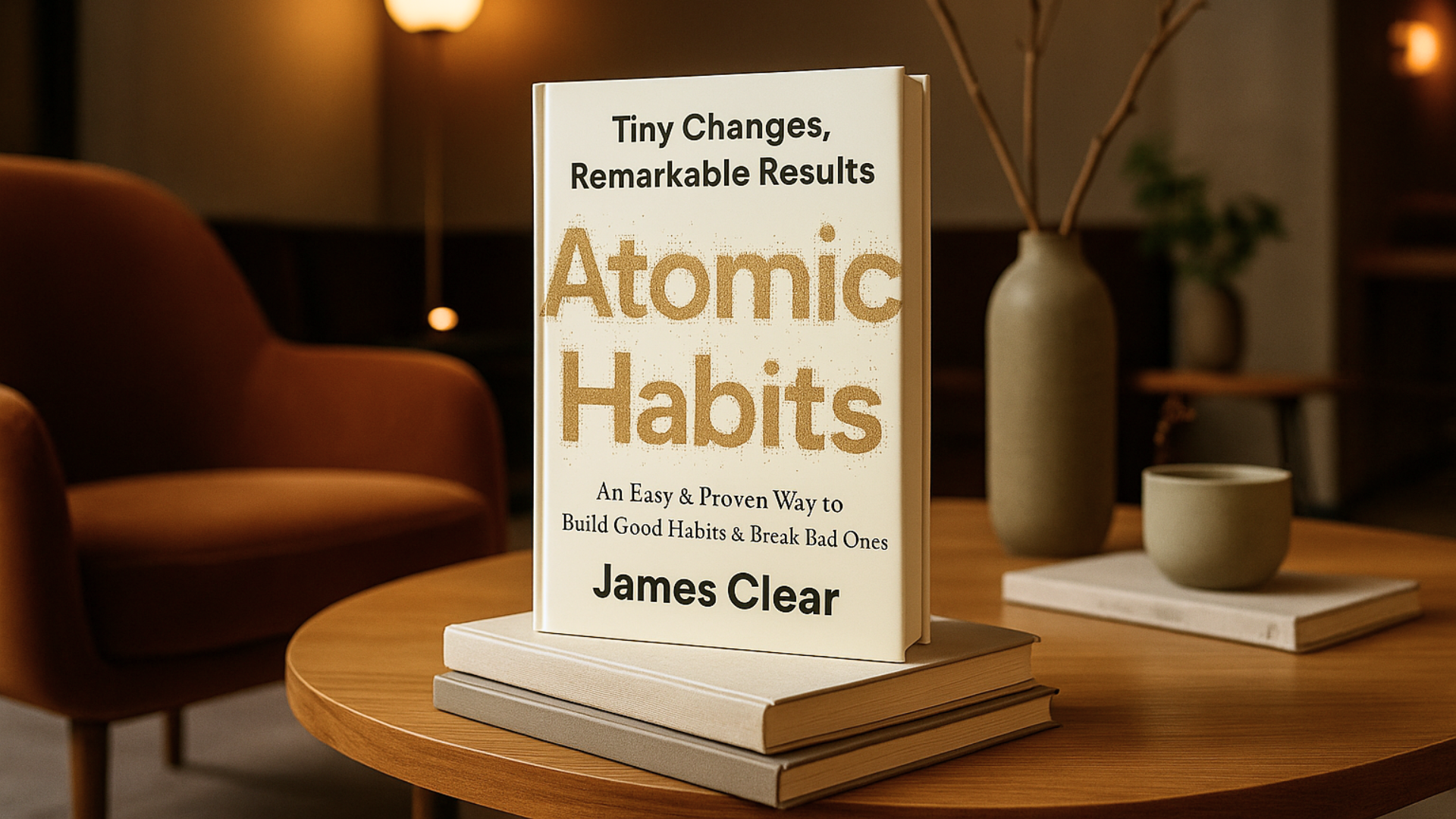Simple Strategies from Atomic Habits That Actually Work

Book Review: Atomic Habits by James Clear
A practical framework for building meaningful change through small, consistent steps
In Atomic Habits, James Clear offers a grounded and highly readable guide to behaviour change, built on the premise that it is not dramatic overhauls but tiny, repeated choices that lead to lasting transformation. Drawing from psychology, neuroscience, and personal experience, Clear lays out a method that is both accessible and empowering. This is a book for anyone who has struggled to stick with new habits, break old ones, or find traction in a busy, distracted world.
What the book promises
Clear promises a system for habit formation that is simple, adaptable, and rooted in evidence. His key idea is that habits are the compound interest of self-improvement. Rather than urging readers to think big, he invites them to start small, focusing on identity-based change and the cumulative power of daily action.
The book’s structure is organized around what Clear calls the Four Laws of Behaviour Change: make it obvious, make it attractive, make it easy, and make it satisfying. These four principles are meant to help readers create good habits and break bad ones, without relying on willpower or motivation alone.
At its heart, Atomic Habits is a promise that change is possible for everyone, no matter their starting point, as long as the approach is sustainable and grounded in real life.
What the book delivers
Clear delivers on his promise with clarity, practical tools, and an intuitive framework. Each of the Four Laws is unpacked through stories, research summaries, and examples drawn from a wide range of contexts, including sports, business, education, and everyday routines.
One of the most valuable aspects of the book is how it simplifies complex ideas without watering them down. Clear’s approach is not about productivity hacks or rigid routines. Instead, he focuses on the systems that support behaviour, and how subtle changes in cues, environment, and reinforcement can reshape outcomes over time.
His emphasis on identity is particularly compelling. Rather than focusing on external goals like running a marathon or writing a book, he encourages readers to focus on becoming the kind of person who runs or writes. This shift in focus from what to who brings a deeper sense of meaning and sustainability to habit change.
The book is filled with actionable strategies, such as habit stacking, temptation bundling, and the two-minute rule. Each technique is simple enough to try immediately but rich enough to build upon.
Style and structure
The writing style is friendly, direct, and unpretentious. Clear avoids jargon and speaks in a tone that feels like a thoughtful conversation rather than a lecture. His voice is confident without being prescriptive, which makes the book easy to follow even when discussing complex behavioural science.
The structure of the book is logical and layered. Each chapter builds on the last, reinforcing earlier concepts while introducing new ones. Visual summaries and key takeaways at the end of each chapter make it easy to revisit ideas or dip back in for a refresher.
What stands out is the intentional pacing. Clear doesn’t rush to deliver solutions. Instead, he takes time to explain why habits matter and how small changes add up over time. This pacing reflects the book’s central thesis: meaningful change is built slowly, with intention and care.
Where the book shines
Atomic Habits shines in its ability to make behaviour change feel both manageable and meaningful. Clear has a gift for breaking down abstract concepts into digestible, repeatable steps. His examples feel relatable without being oversimplified, and he strikes a balance between research and storytelling.
His focus on systems over goals is a refreshing departure from typical self-help advice. Rather than encouraging readers to chase external benchmarks, he encourages them to focus on building supportive environments and consistent processes.
The book is also versatile. Whether someone is trying to improve their health, build a creative practice, or change how they show up in relationships, the framework can be adapted to different needs and contexts.
Light limitations
Some readers may find the repetition of core ideas slightly redundant, especially if they are already familiar with habit science. However, this repetition serves a purpose. Like the habits Clear writes about, revisiting ideas helps reinforce them.
The book is not aimed at addressing deeply entrenched behavioural challenges tied to trauma or systemic barriers. While it offers an accessible starting point, readers dealing with more complex mental health or life circumstances may need additional support beyond what a self-help model can provide.
Additionally, because the tone is pragmatic, some readers may miss a deeper emotional narrative or reflection. This is a practical manual, not a memoir or philosophical exploration.
Final thoughts
Atomic Habits is a quietly powerful guide for anyone looking to create meaningful change through small, daily choices. James Clear offers a method that is rooted in evidence but feels personal and flexible. His belief in the power of tiny gains, layered over time, is both motivating and reassuring.
This is not a book about hustling harder or setting bigger goals. It is about aligning actions with identity, and trusting that even the smallest shifts, if repeated, can lead to profound transformation. For busy professionals, creatives, and anyone seeking traction in their personal or professional life, Atomic Habits offers a clear and supportive roadmap. It does not promise quick fixes. Instead, it offers real hope that change is not only possible but often easier than we think, once we know where to begin.
Highly recommended for readers who want a practical, sustainable way to improve habits, shift identity, and create systems that support lasting growth.